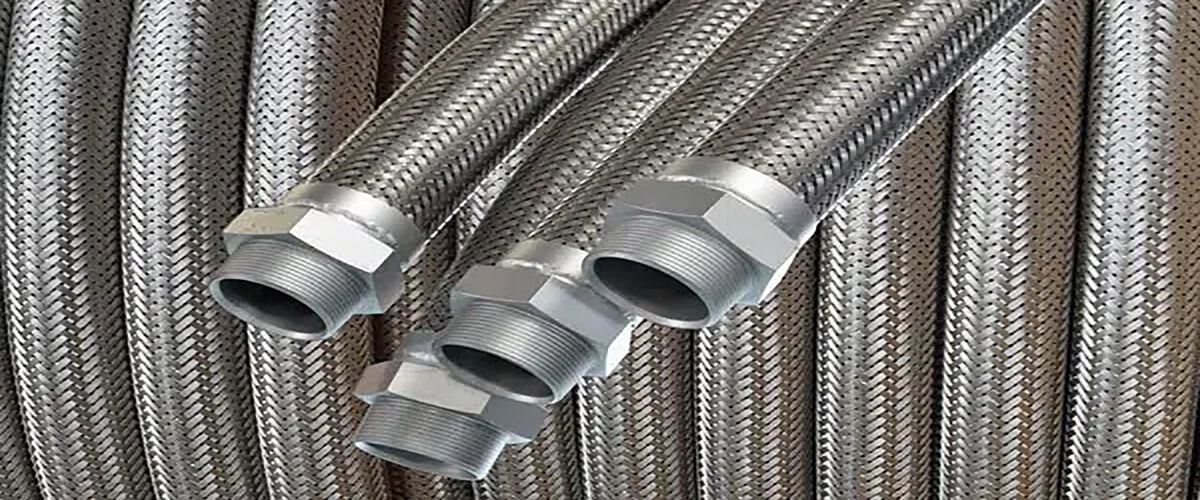If your work environment requires the frequent transfer of hot, corrosive, or hazardous liquids, it is important to ensure you are using the correct flexible hose. The right hose will help ensure consistent performance and minimize the risk of leaks, damaged fittings, or other safety hazards. That’s why it’s important to understand the different types of hoses and understand their differences. We know how important it is to choose the right product for your system. So we’ve outlined the 3 most common hose types to help you make an informed decision.
1. Components within flexible hoses
Most flexible hoses contain the following components:
1) Bellows
Corrugated pipe is the core component of a metal hose. It forms the bulk of every component while playing a role in key value-added attributes such as corrosion resistance, pressure rating, and flexibility. All bellows options are available in different corrosion resistance, pressure, and flexibility levels. This makes the bellows the most important part of every flexible hose.
2) Knitting
The second component of the metal hose is the braid. The braid covers the bellows and directly affects the pressure rating. There are many factors that affect the durability and flexibility of each braid, including wire diameter, wire count per carrier, and braid coverage. Choosing the correct braid construction is critical to preventing hose deformation and ensuring a long service life.
3) Braid collar
Although the braided sleeves only make up a small part of the hose assembly, they play a vital role. All braided collars are designed to connect the inner corrugated hose and braid into a seamless unit. Each collar also ensures that any bending stresses are correctly distributed over the correct corrugations, optimizing the functionality and durability of each component.
4) End fittings
The last component added to the assembly is the fitting. These components allow flexible hose assemblies to be installed into specific connectors, spigots, or other receptacles. To ensure an optimal fit, all end fittings should be thoroughly inspected to verify that size, alloy, and pressure rating are appropriate for the application.
2. 3 Common Types of Flexible Hoses
The following types of flexible hose are commonly used in a variety of applications:
1) Metal hose
Metal hoses can be used in a variety of applications, including transporting gases and liquids, balancing thermal pressure, and helping to resolve misalignment issues. All metal hose assemblies are designed and manufactured to withstand extreme temperatures from -382° F to 1500° F and can be customized to meet the needs of nearly any application. Metal hose is also available in a variety of materials, including bronze, Hastelloy, Inconel, Monel, and stainless steel, allowing you to choose the perfect solution for your needs.
2) PTFE hose
Polytetrafluoroethylene (PTFE) hose is non-reactive, durable, and flexible, making it ideal for a variety of industrial applications. Every PTFE hose is thoroughly designed and tested to ensure it can withstand the most demanding industrial environments. PTFE hose is available with over 36 different types of fittings and metallic or non-metallic braids, making it easy to create the perfect custom option for your application.
3) PTFE hose
Polytetrafluoroethylene (PTFE) hose is non-reactive, durable, and flexible, making it ideal for a variety of industrial applications. Every PTFE hose is thoroughly designed and tested to ensure it can withstand the most demanding industrial environments. PTFE hose is available with over 36 different types of fittings and metallic or non-metallic braids, making it easy to create the perfect custom option for your application.


